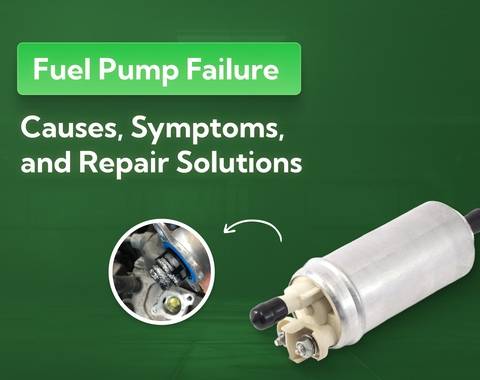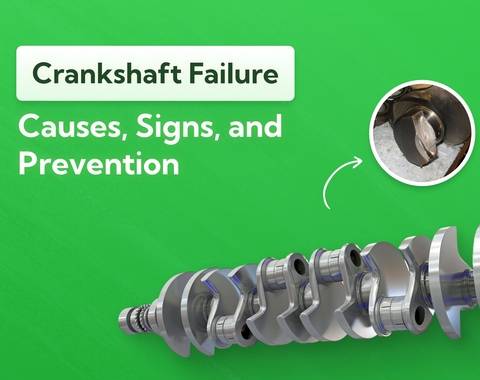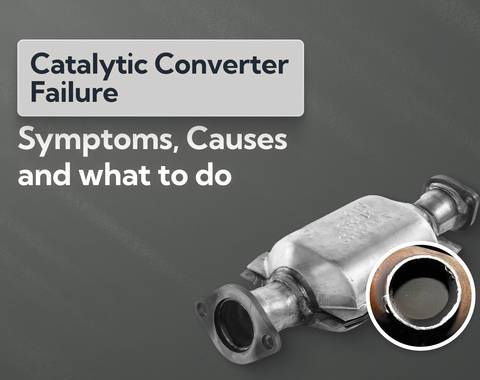How To Sell a Used Car Safely in the UK [2025]
Car scams are everywhere in the UK. Learn how to vet buyers properly, handle payments without risk, spot scam tactics before they happen and use trusted platforms to stay protected both online and off.
Last updated: 16th October, 2025

Anthony Sharkey is COO at New Reg Limited (Car.co.uk, Trader.co.uk, Garage.co.uk), driving innovation in vehicle recycling, logistics, and customer experience.
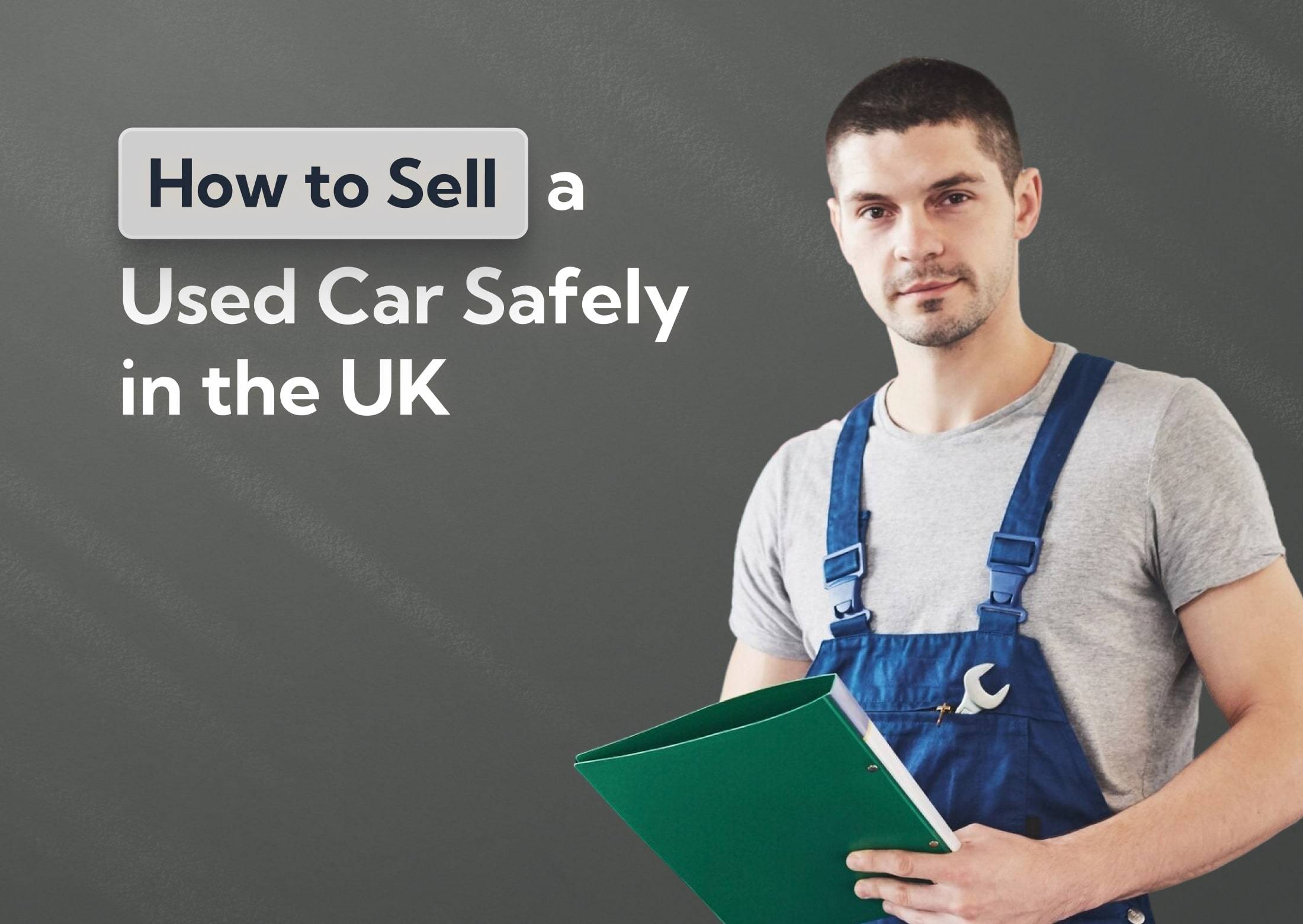
Listen to this story
You’d think handing over the keys and taking the money would be straightforward, but these days, scammers are getting clever.
Payment fraud is the big one. Fake bank transfers, phoney cheques and staged “proof of payment” screenshots that never hit your account. Then there’s the dirty oil trick, test-drive thefts, overpayment scams that try to rope you into sending back the “difference” and phishing messages dressed up to look like they’re from the DVLA or your bank.
And of course, the meeting could be a setup for assault or robbery.
It sounds grim, but don’t worry. There’s a system to avoid all of it. In today’s guide, I’ll walk you through how to sell your car safely in 2025, step by step.
What's in this article
How to safely sell a used car online
Selling online is where most people start, and where most scams happen. The convenience of digital marketplaces comes with a trade-off: less control over who you’re dealing with. But if you know how to pick the right platform, communicate safely and handle payment securely, you can sell your car online without losing sleep (or money).
Use authorised platforms for advertising
Regulated sites like Autotrader and eBay Motors have systems built to protect both sides: verified listings, secure communication channels, fraud monitoring, the list goes on. On Autotrader, for instance, buyers contact you through a form on your advert so your personal email and number stay private.
Now compare that to Facebook Marketplace or Gumtree. Anyone can make an account with no real checks or verification. Self-regulation is exactly why they’re breeding grounds for crime and scams. It’s not that you can’t sell there; it’s just that you need to treat every message like it could be a scam until proven otherwise.
Post on reputable sites
It’s worth saying a second time. Stick to reputable platforms that have real security in place. Here are a few worth considering:
- Car.co.uk: The best route for end-of-life or scrap vehicles. We pick up your vehicle for free, take it to an ATF and pay you on the spot. Then we handle the DVLA notification for you.
- Autotrader: The UK’s go-to platform for private and dealer car sales. Verified listings, built-in messaging and trusted by millions.
- eBay Motors: Ideal for a mix of auction-style and fixed-price listings. Offers seller ratings and dispute resolution options.
- CarGurus: Uses algorithmic pricing insights and transparency tools to help you understand true market value.
- Motorway: Great if you want dealers to compete for your car. They verify buyers and handle most of the admin.
- Carwow: Focused on quick, dealer-driven bids and offers with an emphasis on convenience and vetted buyers.
The added benefit to these platforms (except Autotrader) is they have secure payment options. This is your safety net against fake transfers and vanishing buyers. Reputable platforms use escrow-style systems, verified dealers and direct bank transfers that can’t be faked with a screenshot.
That said, before trusting any site with your car (or your details), check how long it’s been established, read customer reviews and look at their privacy and payment policies. Legit companies will always list contact information, registration details and security procedures.
Communication security: call over text
Text and email make life easy, but they also make it easy for scammers to hide.
A quick call tells you a lot. You can hear tone, hesitation, confidence, all the things text can’t show. Genuine buyers are usually happy to chat, ask sensible questions, and arrange a viewing. Scammers, on the other hand, tend to dodge phone calls and claim they’re “too busy” or “overseas”. That’s your first red flag.
Watch out for fake listings and buyers
Fake listings are more of a buyer problem (though someone might clone your listing). As a seller, the danger’s in who contacts you. Scammers love to prey on private sellers because they assume you’re not used to verifying buyers or handling big payments.
Watch for:
- Vague answers
- Pressure tactics
- Instant payment offers that skip normal process
- Buyers with no profile activity and strange usernames
- Oddly phrased messages (that don’t seem like native English)
If something feels off, Google the buyer’s email, phone number and even their message text. You’d be shocked how often the same scam numbers and scripts appear across forums.
And if you think a listing or buyer’s fake? Stop engaging. Report the post to the platform, flag the profile and don’t click any links they send.
Ensure secure payment methods
The safest way to get paid for your car is through a direct bank transfer using the Faster Payments service. It’s instant, traceable and most importantly, irreversible once the funds land in your account (how you know it’s legit). CHAPS transfers are also solid if you’re selling a higher-end car.
Some platforms, like eBay Motors, use their own escrow-style systems that hold the money securely until both sides confirm the deal. Car buying websites act as trusted middlemen too, so you’re never dealing directly with the buyers.
Avoid PayPal, cash (unless inside a bank), cheques, banker’s drafts and payment apps like CashApp or Revolut. Cheques and banker’s drafts are outdated and can easily be forged. Cash is easy to counterfeit. PayPal and payment apps are potentially reversible and have limited protections for high-value transactions like vehicle sales.
How to sell a used car safely in private
Selling privately can get you a better price, but it also means you’re handling everything yourself. Everything from viewings, test drives and ID/insurance verification to paperwork and payment is going to take weeks to get sorted. That’s where things can go wrong if you’re not careful.
Now, let’s walk through the practical steps for staying safe: how to meet buyers securely, protect yourself during test drives and transfer ownership without leaving any loose ends.
Make sure the buyer comes to you.
When you control the location, you control the situation. It’s safer, simpler and makes it much harder for anyone to pull something on you.
Arrange to meet in a well-lit, public place if you don’t want strangers at your home. Retail park car parks with CCTV, near a coffee shop or supermarket, work perfectly. Avoid remote spots and quiet meeting points; scammers love privacy.
Another tip for making the environment secure: always arrange viewings during daylight hours. It’s easier to inspect the car properly and far safer than meeting in the dark.
Stay with the vehicle throughout the sale.
Never let the buyer take the car or your keys out of your sight. Not even for a minute. If they want to test drive it, go with them. Bring a friend if you can, and make sure you’ve seen and photographed their driving licence and insurance before they get behind the wheel.
Hand over the keys only once you’re in the passenger seat, and keep your phone and valuables with you. Some scammers stage distractions where one person chats while another takes the keys and speeds off.
It sounds far-fetched, but 46,378 cars have been stolen in the first six months of 2025 and this is one of the easiest ways for thieves to do it.
What the experts say

Steven Jackson OBE
Walk away if you feel uncomfortable.
You’re meeting strangers and exchanging a relatively large amount of money. If something seems off about the situation, believe your gut.
Here’s what to watch for when a deal doesn’t feel right:
- The buyer avoids eye contact or keeps rushing you.
- They refuse to give you their phone number, ID or proof of insurance.
- They want to pay in an odd way like an overseas transfer, crypto or partial payment now and “the rest later”.
- They turn up with more people than expected or start distracting you during the meeting.
- They say they’re out of town and send a third party in for the purchase.
- Their body language doesn’t match their words (shifty glances, constant fidgeting and acting overly confident are classic tells).
If your instincts start screaming, step away from the situation, take your keys and documents and leave.
Choose safe payment methods.
Bank transfers are hands-down the safest way to get paid in a private car sale. Specifically, Faster Payments. They’re instant (most of the time), traceable and irreversible. You’ll see the confirmation in real time, and that’s when you hand over the keys.
Cash might feel secure because it’s “in hand” but it’s actually one of the riskiest methods. Counterfeit notes are hard to spot and meeting someone with a wad of cash puts you in a vulnerable position. If you must accept cash, do it inside a bank so they can verify it on the spot.
Cheques and banker’s drafts? Forget it. Both can bounce or be forged and by the time you find out, your car’s long gone.
Never finalise the sale before payment is confirmed.
Some scammers send fake emails or doctored screenshots that look like Faster Payments confirmations. Others initiate transfers from accounts with insufficient funds or use stolen cards, which get flagged and reversed before clearing.
That’s why they push you to hand over the keys quickly. They need to be gone before the bank cancels or blocks the transaction.
With Faster Payments, transfer is usually instant but can take up to two hours depending on the bank, time of day and fraud checks. If the buyer claims they’ve sent the money and it hasn’t arrived yet, just wait. Do not release the car until you can see the cleared funds in your account.
Notify the DVLA after the sale.
Once the car’s sold and paid for, you still need to tell the DVLA. This step formally transfers ownership, which means you won’t get any future speeding tickets, tax reminders or parking fines linked to a car you no longer own. You’ll also get a refund for unused months of road tax.
You can do it online in minutes at gov.uk/sold-bought-vehicle using the 11-digit reference number on your V5C logbook. As soon as you’ve submitted the form, the DVLA updates their records and sends you confirmation by email or post.
What are the risks when selling a used car?
Selling a car comes with real risks, from fake payments and forged documents to theft during viewings or test drives. Whether you’re selling online or privately, each route carries its own challenges. The key is staying alert, verifying everything and never rushing a deal just to get it done.
Overpayment scams
Overpayment scams still work because they prey on trust. The scammer “accidentally” sends too much money, then asks you to refund the difference. A few days later, the original payment bounces or gets reversed and you’re out both your car and the refunded cash.
If someone says they’ve overpaid you, let them know you’ll refund them the difference and finish the transaction once the payment clears.
Fake bank transfers
Fake bank transfers are all about timing and psychology. Scammers forge payment receipts, fake bank notifications, or send screenshots showing “proof” that the money’s been sent — when in reality, nothing has moved. They rely on that short delay between “payment sent” and “funds cleared” to drive off before you realise what’s happened.
Red flags to watch for:
- Payment “confirmation” emails that don’t come from an official bank domain (always check the sender address).
- Screenshots showing payment but no funds visible in your account.
- Buyers pushing urgency (“it’ll show in a few minutes, can I take the car now?”).
- Vague or inconsistent payment references.
To verify real payments, log in directly to your banking app or website and confirm funds are cleared and available to spend. If you’re not sure, call your bank to confirm the transaction. Once you’re certain, you can release the car.
Fraudulent payment methods
Fraudulent payment methods are how most scams end up working. A few you should avoid completely:
- Cash: Easy to fake, impossible to trace, could be a setup to rob you. Only accept it inside a bank where things are secure and staff can verify the notes.
- Cheques and banker’s drafts: They can bounce days later even if they “look” cleared. Outdated and risky.
- PayPal Friends & Family: No seller protection for vehicles. Once it’s sent, there’s no recourse. If you must use PayPal, use ‘Goods and Services’ (but note PayPal still has limits for vehicles).
- Payment apps: CashApp, Revolut, Zelle — fine for lunch money, not for car sales.
Test drive scams
Some “buyers” are just thieves looking for the perfect opportunity to steal your car. Sometimes they’ll even bring an accomplice to distract you while they drive off.
Always check ID and proof of insurance before letting anyone behind the wheel. Take a clear photo of both. Go with them on the test drive (in the passenger seat) and keep the keys in your pocket until you’re inside the car.
Fake buyers
Fake buyers pretend to be interested in your car to scam or steal from you.
- Online warning signs include buyers who offer full asking price (or more) without seeing the car, push for courier collection, ask for your bank details upfront or send fake payment confirmations. Anyone trying to move the conversation off-platform or avoid a phone call is worth second-guessing.
- In-person warning signs include turning up with extra people, refusal to show ID, acting nervous or overly assertive and trying to rush the deal. If someone makes you feel uneasy in their tone, behaviour or the situation, back out of the deal.
It’s especially important to look at the online warning signs because not every fake buyer wants to scam you over the car. Some are using the sale as a setup to rob you.
How to sell a car privately
Selling your car privately isn’t rocket science. But you are doing everything yourself: the marketing, the money, the paperwork. That’s the trade-off for getting the best price. The goal is to make your car stand out, protect yourself during the process and keep the sale completely above board.
- Prepare your car for sale. Clean it inside and out, fix obvious faults and gather all the paperwork. That includes the V5C logbook, service history and a valid MOT.
- Set a fair price for your car. Research similar models with about the same condition and mileage on Autotrader, CarGurus or Parkers. Price slightly above your minimum so you’ve got room to negotiate. You can also get an instant car valuation from us for free.
- Advertise your car effectively. Use reputable platforms like the ones we listed and include clear, honest photos of the interior, exterior and engine. Mention the service history, mileage, standout features and write-offs/damages if there are any.
- Communicate safely with buyers. Stick to calls and platform messaging. Avoid sharing personal info and never accept random links and attachments. Screen buyers ahead of time to avoid lowball offers.
- Meet buyers in safe locations. Always meet in daylight, in public places, ideally with CCTV. Bring someone with you if you can.
- Negotiate the price and close the deal. Knowing how much your car is truly worth is key to staying firm but reasonable. Finalise the price before closing the deal and make sure the payment clears before handing over the keys.
- Complete the necessary paperwork. Fill out the V5C, give them the ‘new keeper’ slip and notify the DVLA. Give the buyer a receipt that includes both your names, the date, price and registration number.
What to do if you detect any issues during the sale
Stop the sale immediately.
Rushing is how people get scammed, which is why we always recommend stopping the sale if something feels off. Millions of Britons use car buying sites; if you let this buyer go there’ll be another one interested before you know it.
Verify the buyer’s identity and payment.
Before meeting up with them, look at their username and profile. If they don’t have connections (e.g. Facebook friends for Marketplace listings), contact details or a profile photo and their name is obscure (e.g. “travis0918340983”), they’re almost definitely fake.
If they pass your initial checks, ask to see official photo ID (a driving licence or passport) when you meet them and confirm it matches the name on their payment method and address. You’ll need these things to notify the DVLA anyway, so every real buyer will be happy to give them.
When they confirm the payment, check your bank account yourself. Don’t rely on screenshots or email confirmations. If the buyer hesitates or gets defensive, that’s your sign to pause. And if you suspect a fraudulent payment, call your bank. They’ll confirm whether the transfer is real.
If it turns out to be a scam attempt, report it to Action Fraud and the platform where you listed the car.
Protect your car and documents.
Keep the keys, V5C and service history in your possession until payment clears. Don’t hand over the logbook and don’t let anyone photograph it. Scammers use registration details to clone vehicles and forge ownership documents. Lock the car if you need to step away, even briefly.
If the buyer insists on getting in the car and leaving before payment clears, don’t allow it. A legitimate buyer will understand that access comes after money changes hands, not before.
Consider scrapping the car if the deal falls through.
To a scammer, £500 is still a lot of money. So if you’re selling an older or high-mileage vehicle, you’ll attract more people who want to take advantage of you. A lot of people fall for this because they know there aren’t many people who actually want the car, so they get excited when someone reaches out right away.
This is also worth considering if your car’s been listed for several weeks and you haven’t had any luck with legitimate buyers. At that point, most drivers decide to cut their losses and take the quick and easy route.
When you scrap your car with us, it’s free, quick and easy:
- Get an instant quote. Enter your reg and postcode for a real-time valuation.
- Book free collection. We’ll arrange pickup at a time that suits you.
- Get paid instantly. Secure bank transfer as soon as the car’s collected.
- We handle the DVLA. You get a Certificate of Destruction and complete peace of mind.
Do a quick cost-benefit analysis on selling vs scrapping the car. If it’s older than 15 years and/or has more than 100,000 miles, it’s probably at the end of its useful life.
About Car.co.uk
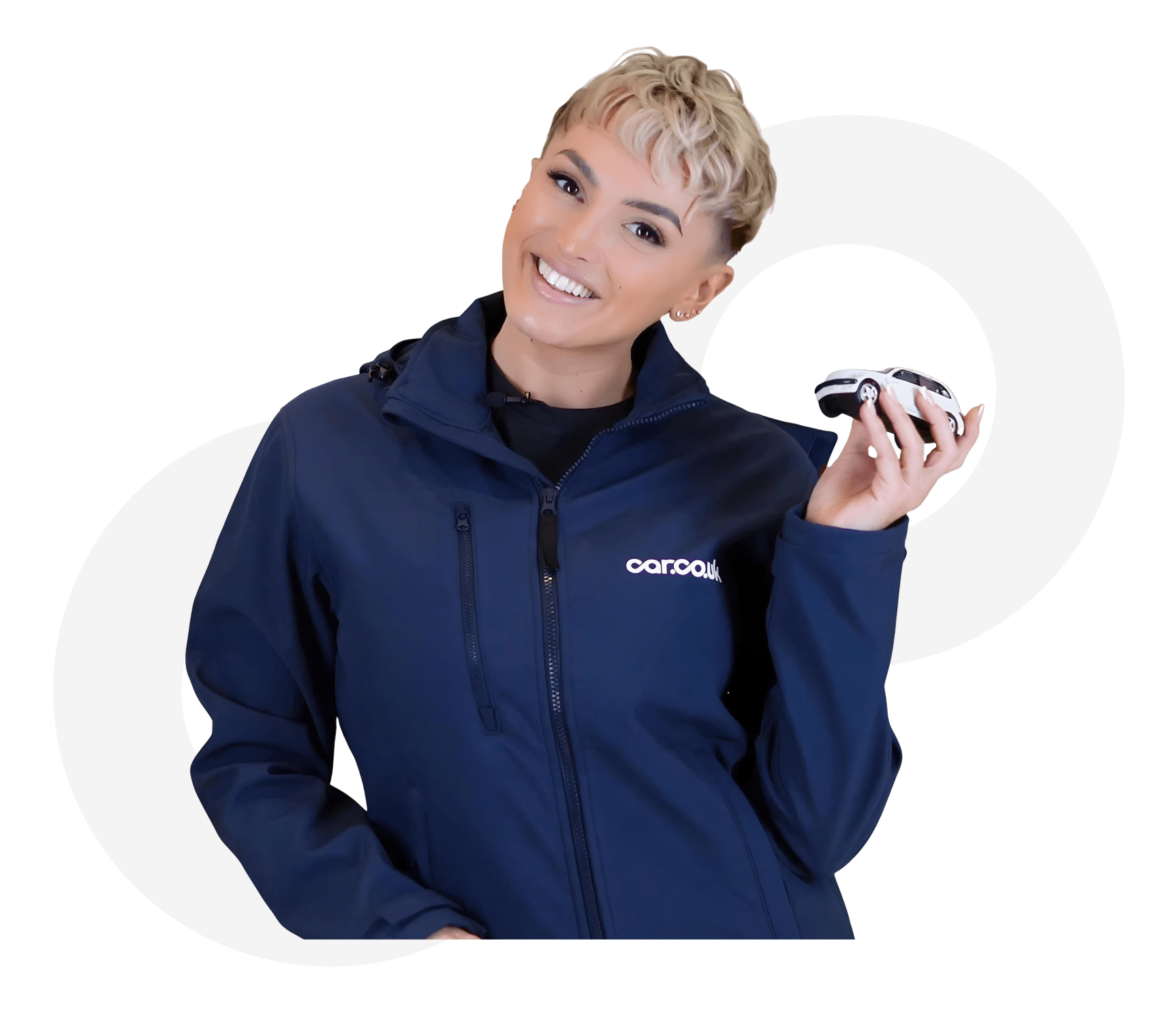
Frequently asked questions
You’ll need the V5C logbook, service history and receipts for recent work if you have them. A valid photo ID helps confirm ownership. You don’t need your MOT certificate anymore since that’s been fully digitised for years, though it helps to have a valid MOT at the time of sale.
When the sale’s complete, you’ll give the buyer a receipt and notify the DVLA online that you’ve sold the car.
Legitimate buyers are transparent, patient and happy to verify their ID. They’ll speak over the phone, meet in person and never rush you. Scammers avoid calls, push urgency, suggest strange payment methods and ask to meet in odd locations.
Stop all communication with that person and definitely don’t share personal details. Keep hold of the car and report the incident to Action Fraud or the platform you used. If you’ve shared bank details or think a payment was fraudulent, contact your bank right away.
No. You’ll need to settle the outstanding finance before transferring ownership. Call your lender to get a settlement figure, then use the buyer’s payment to clear the balance. Only transfer the car once the lender confirms the finance is paid off.
Check listings for similar cars on listing sites like Autotrader to gauge market value. Factor in age, mileage, service history and condition. Then, aim slightly higher than your minimum price so you’ve got room to negotiate or mark it down.
Share on
Latest news & blogs




